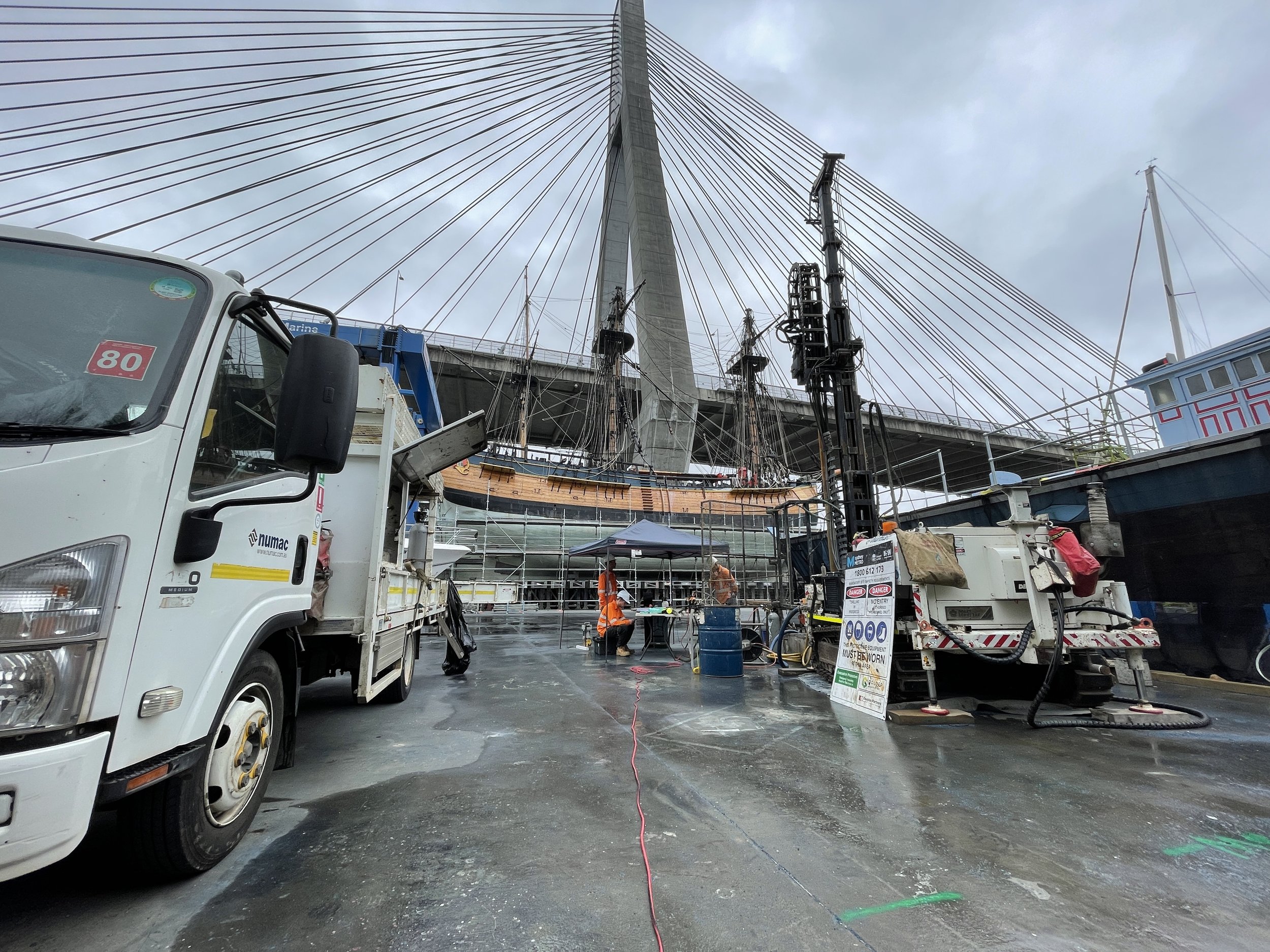
Installation of Inclinometers
Inclinometer Installation for Monitoring Ground Movement
When installing inclinometers to monitor ground movement, slope stability, and subsurface deformations, it’s critical to choose a drilling contractor with the right expertise. The success of an inclinometer installation hinges on the contractor’s experience with geotechnical monitoring systems. Proper installation ensures accurate data collection, long-term stability of the sensor, and the reliability of the entire monitoring system.
Legion Drilling, with depots in Brisbane, Sydney, and Townsville, offers expert drilling and inclinometer installation services. With extensive experience in geotechnical monitoring, we provide accurate and reliable inclinometer installations, designed to meet the specific needs of each project and ensure the long-term success of your monitoring system.
How Inclinometers Work
Inclinometers are used to measure changes in the angle of the ground or structures. These sensors are installed along a borehole or within a casing to monitor ground displacement in response to environmental or engineering factors. The inclinometer tube contains a probe that detects the changes in angle and transmits the data, which is then logged for analysis.
Best Practice Installation Methodologies
A successful inclinometer installation relies on attention to detail during the installation process. Below are some best practices to follow:
Site Assessment and Preparation:
Conduct a detailed site survey to assess potential ground movement zones and determine the optimal placement of the inclinometer.
Ensure borehole dimensions and casing materials are compatible with the sensor requirements.
Pre-Installation Calibration:
Calibrate the inclinometer to verify that it is functioning properly before installation.
Perform a functional test of the inclinometer and data logger to ensure accurate readings.
Borehole Installation:
Drill the borehole at the specified location and depth, ensuring it remains stable during the installation process.
Install the inclinometer casing in a way that allows the probe to slide smoothly and accurately measure angular displacement.
Grouting and Sealing:
Fill the borehole with a high-quality grout to secure the inclinometer casing and minimize potential movement or interference from surrounding soil.
Seal the borehole to prevent water or contaminants from interfering with the data.
Cable Protection:
Route cables carefully to avoid physical damage during installation and throughout the project.
Use protective cable wraps or conduits to shield cables from external elements that could affect their performance.
Data Logger Configuration:
Integrate the inclinometer with a data logger, configuring it to record measurements at the required intervals.
Test the data logger to ensure it is capturing and storing the data appropriately.
Post-Installation Verification:
Conduct initial readings to ensure that the inclinometer is working properly and is accurately measuring ground movement.
Review the data trends over time to confirm that no installation issues are affecting the readings.
Documentation and Monitoring:
Maintain thorough documentation of the installation process, including borehole depth, casing material, grout mixture, and calibration data.
Periodically inspect the installation site and verify that the inclinometer is functioning correctly.
Common Issues with Inclinometer Installation
While inclinometer systems are reliable for monitoring ground movement, several challenges can arise during installation:
Borehole Instability:
Boreholes that collapse or shift can distort data and affect sensor accuracy.
Solution: Use appropriate borehole stabilization techniques, such as casing installation or support during drilling.
Inaccurate Calibration:
If the inclinometer is not properly calibrated before installation, it can lead to inaccurate readings.
Solution: Ensure proper calibration of the sensor and the data logger, and verify their accuracy with test measurements before full installation.
Cable Damage:
Cables that are not properly shielded or routed through safe areas can be damaged by environmental factors, affecting signal transmission.
Solution: Protect cables with conduits or cable guards and ensure they are routed through safe, clear paths.
Poor Grouting Practices:
Inadequate grouting can result in sensor movement or loss of contact with surrounding soil, leading to unreliable data.
Solution: Use a high-quality grout mixture to secure the casing and inclinometer in place, and ensure that the borehole is completely filled.
Incorrect Depth of Installation:
Installing the inclinometer at an incorrect depth may result in data that does not accurately reflect ground movement at the monitoring location.
Solution: Carefully analyze site conditions and select the optimal depth for the inclinometer installation.
Temperature Variability:
Temperature fluctuations can affect sensor readings, especially if the inclinometer is sensitive to thermal changes.
Solution: Use temperature compensation features or place the inclinometer in areas with consistent temperature conditions to reduce this issue.
Signal Interference:
Electromagnetic interference can affect the data transmission from the inclinometer to the logger.
Solution: Use shielded cables and ensure that the inclinometer and cables are kept away from sources of electromagnetic interference.
Benefits of Inclinometer Systems
Accurate ground movement data: Provides precise measurement of subsurface deformations.
Real-time monitoring: Allows continuous monitoring of ground stability over time.
Long-term durability: Inclinometers are designed for long-term deployment and reliable data collection.
Automated data collection: Compatible with data loggers for efficient, continuous monitoring.
Inclinometers can be used in a wide range of applications, including slope stability analysis, tunnel construction, foundation monitoring, and subsidence studies. Legion Drilling offers a range of solutions tailored to meet the specific requirements of each project, ensuring reliable, long-term monitoring success.Improper grouting can result in poor contact between the piezometer and the surrounding soil, leading to inaccurate readings.
